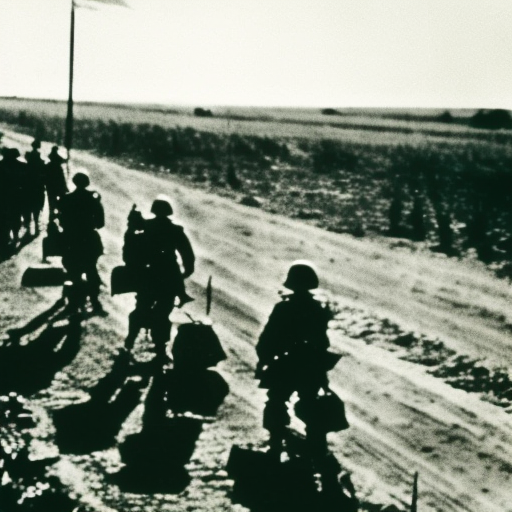Summary:
Operation Barbarossa was the code name for Nazi Germany’s invasion of the Soviet Union during World War II. Launched on June 22, 1941, it was the largest military operation in history, involving over three million German troops. The invasion aimed to conquer Soviet territory, eliminate the Soviet Union as a political and military power, and secure resources for Germany’s war effort. Despite initial success, the operation ultimately failed, resulting in heavy casualties for both sides and a turning point in the war.
Background:
By 1941, Nazi Germany had already conquered much of Europe and sought to expand its empire further. Adolf Hitler, the German dictator, viewed the Soviet Union as a threat and believed that its vast resources could be exploited for Germany’s benefit. Additionally, Hitler aimed to eradicate communism and establish German dominance over Eastern Europe. In preparation for the invasion, Germany amassed troops, tanks, and aircraft along the Soviet border.
The Invasion:
On June 22, 1941, German forces launched a surprise attack on the Soviet Union. The invasion was divided into three army groups: Army Group North, Army Group Center, and Army Group South. The German troops quickly advanced into Soviet territory, capturing vast areas and encircling Soviet armies. The Luftwaffe, Germany’s air force, provided crucial support by bombing Soviet airfields, infrastructure, and cities.
Soviet Response:
The Soviet Union was initially caught off guard by the invasion, as Stalin, the Soviet leader, had ignored warnings of an impending attack. However, the Soviets quickly mobilized their forces and adopted a strategy of scorched earth, destroying infrastructure and resources to deny them to the Germans. The Soviet people also displayed great resilience and determination, forming partisan groups to disrupt German supply lines and conducting guerrilla warfare.
Challenges and Setbacks:
Despite early successes, the German invasion faced numerous challenges. The vastness of the Soviet Union, coupled with harsh weather conditions, stretched German supply lines and weakened their troops. The Soviet resistance, particularly in cities like Leningrad, Moscow, and Stalingrad, proved formidable. The German advance slowed, and the Soviets launched counteroffensives, pushing the Germans back.
Turning Point and Outcome:
The Battle of Stalingrad, which began in August 1942, marked a turning point in the war. The Soviet Union successfully defended the city, inflicting heavy losses on the German army. This defeat severely weakened German morale and marked the first major setback for Hitler’s forces. The Soviet Union gradually regained territory and launched a massive offensive in 1944, pushing the Germans back to their borders.
Consequences:
Operation Barbarossa had significant consequences for both Germany and the Soviet Union. The invasion resulted in immense human suffering, with millions of soldiers and civilians losing their lives. It also strained Germany’s resources and diverted attention from other fronts, contributing to the eventual defeat of the Axis powers. For the Soviet Union, the invasion solidified their determination to resist the German forces and played a crucial role in their eventual victory in World War II.
Conclusion:
Operation Barbarossa was a massive military campaign that aimed to conquer the Soviet Union and secure resources for Nazi Germany. Despite initial success, the invasion ultimately failed due to Soviet resistance, harsh weather, and stretched supply lines. The Battle of Stalingrad marked a turning point in the war and weakened German forces. The invasion had significant consequences for both Germany and the Soviet Union, resulting in immense human suffering and contributing to the eventual defeat of the Axis powers.












